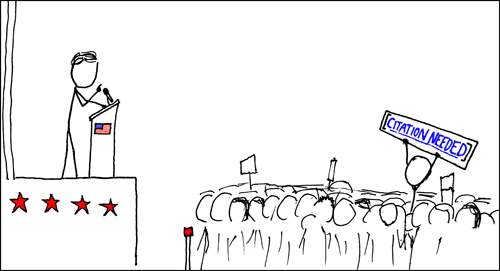In the last couple weeks, we’ve heard a lot about fake news, and “post-truth” was recently named by Oxford Dictionaries as its word of the year. One of the things this has had me thinking about is not only how news stories proliferate online, but how information transforms as it circulates. In particular, I’m interested in how information from one text is translated or “recomposed” into another–whether it’s commenting on an article shared on Facebook, summarizing an argument via a text message, or even writing a clickbait headline. What is gained, lost, or otherwise changed through this process? How do these “new” texts then circulate, and to what effect?
Recomposition isn’t a new phenomenon to digital writing. In “Composing for Recomposition: Rhetorical Velocity and Delivery,” Jim Ridolfo and Dànielle Nicole DeVoss use the concept of “rhetorical velocity” to discuss how rhetors can strategically compose texts such that they might be taken up by third-parties to various effects. Here, rhetorical velocity is primarily approached from the vantage point of a writer, with an eye toward how and why the decisions she makes will influence the delivery of the text. In this, Ridolfo and DeVoss take up “remixing” in terms of rhetoric and composition, noting that remix is “perhaps the premier contemporary composing practice.” Notably, although “remix” is commonly framed in terms of video or audio mash-ups, it can also apply to alphabetic texts as well. And the authors draw on Lawrence Lessig to discuss how Wikipedia evidences such textual remixing, as editors post and collectively edit articles such that “work and authorial agency is attributed often in diverse, diffuse ways.“
From a recomposition/remix perspective, then, Wikipedia is a site that productively complicates the notion of the autonomous author creating everything from scratch. Wikipedia’s policies on verifiability and no original research make it so that the information found in its articles should link to reliable source material, which is why one approach to using Wikipedia in the classroom is to present it as “the first stop,” where students can use the site to find external sources which they then read, cite, and otherwise incorporate.

But in addition to providing access to “reliable sources,” a Wikipedia article provides an excellent site where we can study how texts are summarized, paraphrased, and cited to produce a larger composite text. For instance, we can compare a line in a Wikipedia article with the source it’s based off to analyze how it was recomposed and to what effect. Students can see how incorporating texts isn’t just a classroom exercise, but that it underlies one of the most popular websites in the world and that recomposition is never a neutral practice, which is important to recognize whether we’re writing or reading. Because along with my concerns over “fake news,” I also know that even under the most honest of circumstances the story doesn’t end with the source text.


